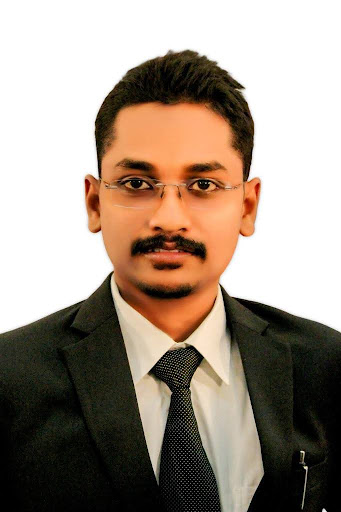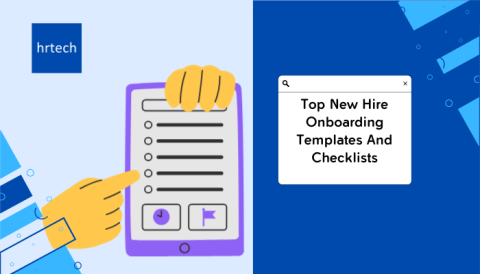In the fast-paced and ever-evolving business landscape, the HR function continues to undergo impressive transformation. Adopting innovative strategies and cutting-edge technology equips HR teams with advanced tools and skills to manage, retain, and attract talent effectively. They become strategic partners that drive business success.
Supercharged by rapid technology advancements, the evolution of HR changes the way businesses handle their most valuable asset: employees. As we face the future, integrating technology into HR processes has the potential to empower businesses to optimize the full potential of their teams.
Let’s explore the top trends you can leverage to tackle the complex challenges of the competitive landscape with unmatched efficiency and agility.
7 Trends Shaping the Future of HR Technology
As more businesses embrace digital transformation, HR teams must remain abreast of the swift changes and integrate innovative solutions. Adopting the following trends could better position you to maintain a competitive edge.
- Immersive Workplace Technology
Employee engagement significantly affects workplace morale, job satisfaction, and overall productivity. Technology advances continue to enhance how HR teams engage employees. Two emerging technologies setting the pace in HR are Augmented Reality (AR) and Virtual Reality (VR).

These immersive and highly effective technologies provide innovative ways to keep team members engaged. For instance, you can use AR and VR to create interactive and immersive experiences, where new team members can learn about key procedures, their roles, and your company.
Simulating real-world cases provides hands-on experience that can be vital, especially in roles that involve complex environments or procedures. Integrating AR into training sessions offers real-time feedback and step-by-step guidance that enhances skill acquisition and knowledge retention.
- Global Collaboration and Communication Tools
In a typical modern work landscape, global interconnection leads to teams operating in different time zones and from various locations. This dispersion often creates a sense of isolation and communication issues among team members.
Collaboration is therefore vital and HR technology bridges these gaps. It provides tools you can use to ensure seamless teamwork across different geographical locations.
These collaborative tools come with file-sharing, communication, and work management features, enabling real-time cohesive work regardless of physical location. In addition to enhancing productivity, you can successfully nurture a sense of togetherness and purpose within your team. - Remote Work and HR Technology Integration
Hybrid work has become the new normal, prompting businesses to rely on HR technologies to improve the workplace experience. These technologies include a diverse range of platforms and tools that ensure and facilitate seamless remote teamwork. They also include employee management systems that streamline HR processes and allow efficient performance evaluation using the OKR framework.
The workplace concept is also evolving, with workspaces no longer limited to physical offices. These spaces have to be flexible and hybrid to accommodate the diverse needs of a workforce.
The best way to create an ideal workspace is to use advanced communication tools that allow seamless remote and in-office collaboration. Such tools provide access to cloud-based platforms that ensure real-time interactions among dispersed teams.
By adopting these HR technologies, you can foster engagement, optimize productivity, and have the capacity to adapt to the changing dynamics of the work environment. - AI-powered Talent Acquisition and Management
Acquiring, retaining, and managing top talent is increasingly competitive but recruiting budgets and resources are often limited. Such situations require HR teams to work smarter, with AI presenting excellent opportunities for businesses to revolutionize recruitment.
As Gartner’s statistics highlight, over 80% of HR leaders implement or are exploring AI solutions that enhance process efficiency.
With AI-powered talent acquisition and management solutions, you can transform each phase of the talent lifecycle. For instance, AI can enable you to swiftly identify suitable candidates with the necessary skills for a certain role. It’s easier to shortlist qualified candidates, reducing the time to hire and saving your team valuable time.
AI can also help you evaluate the skills your current employees have to identify skills gaps. This allows faster and smarter decisions involving redistributing, reskilling, and hiring talent.
Advances in generative AI further increase efficiency, making it possible to create job descriptions that are relevant to the vital skills your team lacks. AI can suggest the right questions to present to get the information you need.
Furthermore, automating manual HR tasks that limit your team and ultimately, your business, saves you money and time while allowing more time to focus on key business aspects. - Continuous Learning and Development Initiatives
Continuous learning is a key pillar that drives personal growth and overall business success. Technology-driven learning systems will continue providing better access to opportunities for teams to expand their knowledge and skills.
Such innovative platforms deliver personalized development plans customized to every employee’s unique needs. They can start a learning process that’s in line with individual career objectives, from leadership development to technical skills.
Flexibility is one outstanding benefit of technology-driven learning. Team members can participate in learning activities without the limitations of classroom-based training.
Interactive simulations enhance the learning experience by creating an engaging and immersive environment for hands-on training. The ability to apply skills and knowledge in real-life situations can help bridge the gap between practice and theory. Such an approach also fosters problem-solving and critical-thinking skills. - Data-Driven Decision Making
In the current business landscape, data is steadily emerging as a crucial aspect that transforms how HR teams operate. Advances in technology empower HR managers with robust platforms and tools to gather, analyze, and understand large datasets that involve areas like turnover rates, engagement levels, and team performance.
Leveraging the full data potential enables leaders to make data-driven and informed decisions about key aspects including KPIs for HR, employee development, training, and recruitment.
Integrating HR processes with predictive modeling and analytics is also gaining popularity. Predictive analytics use real-time and historical data to recognize patterns and trends. It’s easier for HR teams to predict future talent needs with more accuracy.
These insights into possible workforce challenges and skill gaps allow you to implement proactive measures to manage them in advance. This keeps your organization agile and empowered with the right talent to achieve your business goals.
Additionally, this invaluable data enables HR teams to align workforce strategies with the overall business objectives. You can study data correlations and patterns to pinpoint the most effective training and hiring practices. It will be simpler to identify areas of improvement and create strategies that boost employee retention and engagement.
Data-driven decision-making also takes collaboration among HR leaders to a new level. You can make more confident and quicker decisions together, allocate talent as necessary, and be proactive with skills-based hiring and level-up workflow planning. Together, you can collaborate to design a skill-based and holistic talent strategy that will keep your businesses ready to brave the future. - Cloud-Based HR Systems
In contrast to traditional HR systems, cloud-based systems streamline data and key processes. Real-time connectivity and visibility across all systems provide an in-depth view of aspects, helping you identify opportunities and trends in all HR processes.
Businesses that implement cloud-based HR technology report experiencing higher productivity and employee satisfaction. Cloud-based solutions enhance how you manage hybrid and remote work setups and your data analytics capabilities while streamlining talent acquisition efforts.
Moreover, cloud-based HR systems offer standardized workplace procedures and policies across multiple locations and regions. Employees have access to self-service HR portals where they can request time off, update personal details, and utilize training materials.
Advanced platforms provide user-friendly interfaces, promoting engagement and efficiency by giving employees control over HR-related activities. You can leverage cloud-based technology to ensure employee development and growth by integrating these solutions into performance management software, remote work management, and talent development. This, will, in turn, result in higher retention rates and job satisfaction.
Unlike traditional HR systems, cloud-based solutions offer unmatched agility. You can scale up or down your HR infrastructure to ensure more efficient adaptation to a dynamic workforce.
Most cloud solution models have tiered pricing, which can be more cost-effective as it eliminates the necessity for expensive hardware. Remote accessibility ensures interaction flexibility between employees and HR teams with the system, creating a more user-friendly and responsive HR environment.
Additionally, implementing cloud-based employee management systems offers a platform where you can set and monitor team and individual goals while ensuring they align with the business objectives.
Such transparency helps every team member understand how their actions contribute to the overall business goals. This alignment with the organizational strategy nurtures a sense of purpose, enhances engagement, and creates a unified, goal-driven workforce.
Conclusion
The integration of HR processes and technology is setting a pace for the future of workforce management. Instead of being limited to administrative activities, HR teams are now a vital pillar that drives business success.
Technology has transformed different HR functions such as data-driven decision-making, development and learning, performance management, and employee experience.
The future of AI in HR is a significant trend that aims to automate time-consuming and routine processes. It enhances efficiency in HR activities while allowing HR teams more time to focus on key business aspects.
As businesses continue embracing the impressive capacity of cloud-based HR solutions, a focus on AI integration is bound to reshape the future of workforce management.
These trends motivate exploiting HR technology in strategic planning to create a more responsive and agile way to handle the dynamic challenges of human capital management.
Author Bio

Sasi Dharan, Marketing Manager, Profit.co,
In his current role, he leads the Digital Marketing Team. He has a decade of experience in Project management, Operation Excellence Consulting, and Digital Marketing. He is passionate about creating new approaches to brand awareness, and demand generation. He is passionate about learning new technologies, and strategies in marketing and deploying them in his organization. He is also an avid traveler and a biker who has traveled almost 7000 miles in a year.





